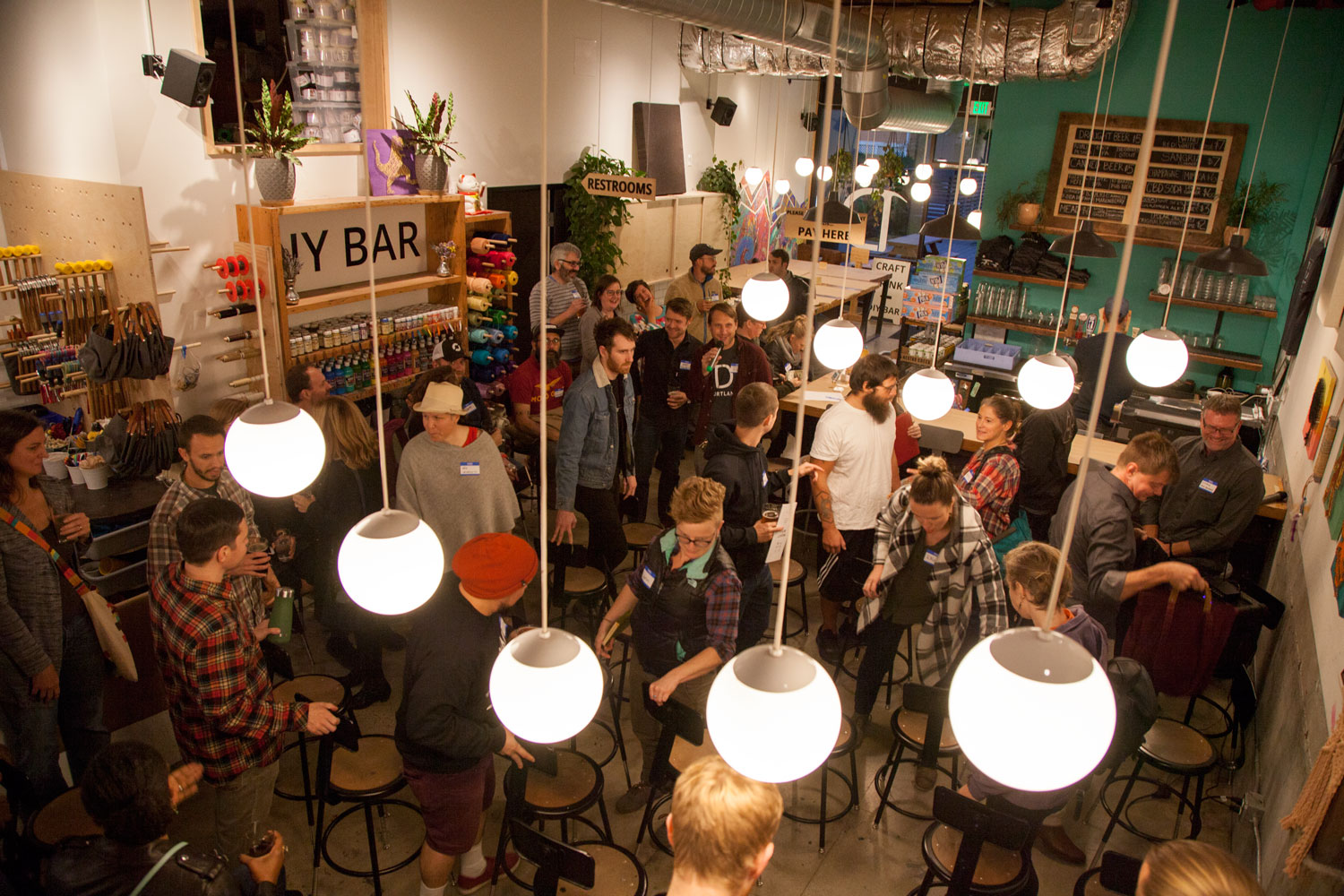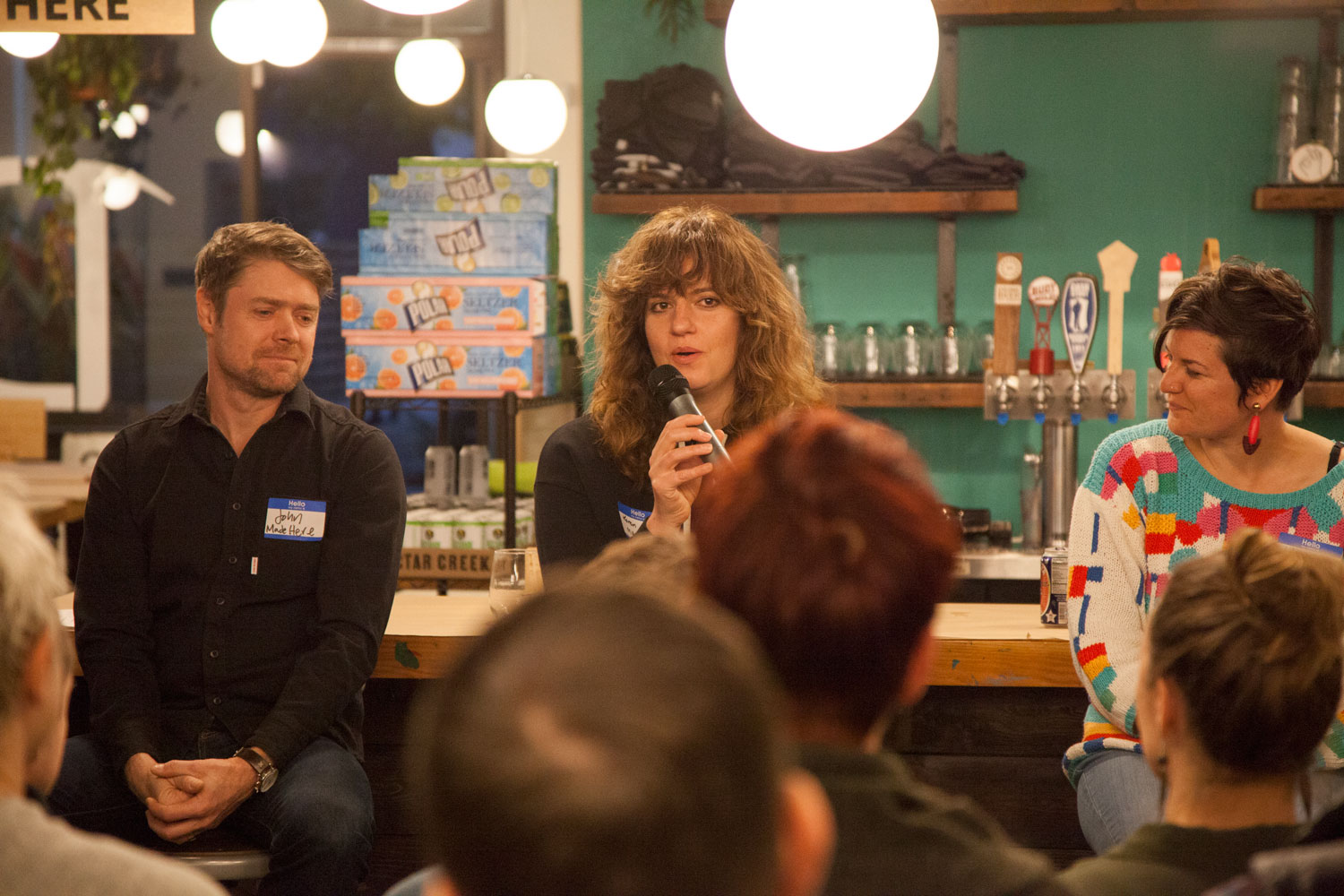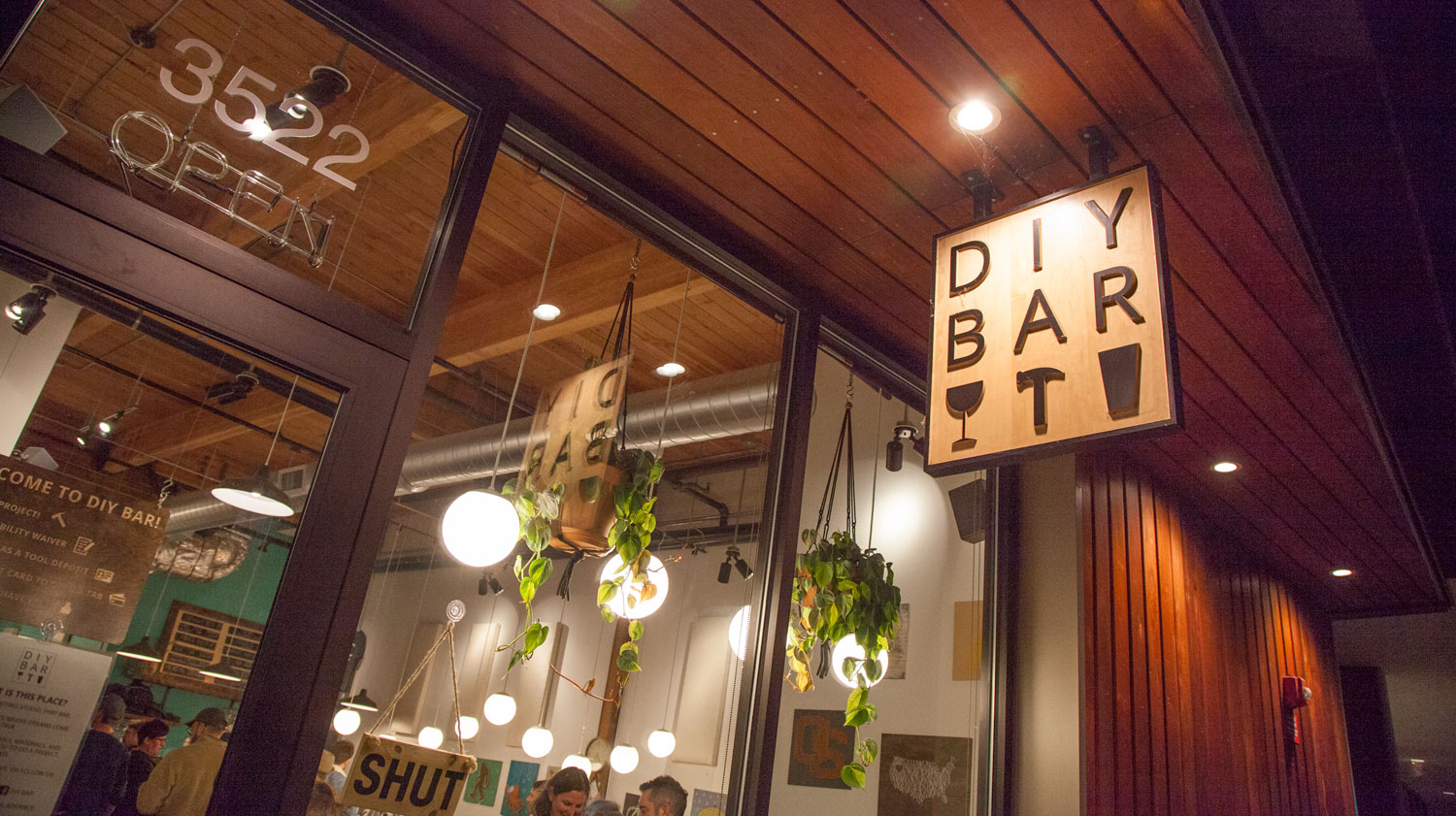Crack the Retail Code With These Wholesale Geniuses
October’s meetup was hosted by DIY Bar in North Portland, established by brothers Jason and Adam Gorske about a year and a half ago. With dual passions for crafting and craft beverages, the brothers opted to combine the two to create an intimate space where the crafty “and not so crafty” can sip and tackle projects including simple wallets, koozies, and jewelry.
With the holiday (read: gifting) season nearly upon us, it seemed appropriate to focus on how makers can get their products in front of consumers as they search for the perfect little something for friends and family members. Portland’s reputation as a maker haven is already well-established, and savvy retailers in the metro have developed systems to support niche, exclusive products made locally. On October 22, representatives from four of these retailers graciously offered their insights on how to stand out in a competitive market and make it onto their shelves.
The panel included John Connor (CEO & Owner, MadeHere PDX), Karen McClelland (Owner, Mantel), Lauren McCune (Gift Buyer, Powell’s Books), and Chris Tjersland (Director of Brand Development, New Seasons Market), and they offered thoughtful answers to questions posed by Portland Made’s Jim Hassert:
Is it bothersome to get a cold call?
In general, the panel thought this was not the best way to reach them. Connor of MadeHerePDX did note that he appreciates the perspective of brands trying to make contact: Specifically, what made them reach out?
However, larger retailers like Powell’s and New Seasons actually have programs in place to help local makers make it into their stores (New Seasons, for example, has a Local Finds program just for small, regional producers).
For McClelland, being a small operation limits her availability for unscheduled meetings and phone calls: A lot of the time, she’s on the retail floor, and she simply doesn’t have the time to take cold calls. She would much prefer an email with images, line sheets, and/or links to a product website for her to look at when her schedule allows.
How can makers stand out at trade shows?
The panelists had a lot of ideas on how to get their attention. McCune stated one of her favorite parts of going to trade shows is meeting the people behind the products. A booth that tells a brand’s story is going to make an impact, too.
Connor offered some more unorthodox advice, telling the audience to get “asymmetrical” and “guerilla”—try to get an ad in the trade show’s publication, or ask another booth if you can merchandise your product alongside theirs if they are complementary. And if your approach breaks the rules? At least you’ve made a splash: People won’t forget the maker who got thrown out of the craft fair.
How can buyers help with sell-through?
Connor advocated for makers seeking out POP (point of purchase) merchandising options. If you can get your product closer to a cash register, you’re guaranteeing it will be seen and giving clerks the ability to talk to you up without having to leave their station.
Tjersland encouraged makers to check out how their category as a whole is merchandised in retail outlets. For example, if every local tea is in a vertical package, don’t make yours horizontal—items in an unconventional package won’t fit on eye-level shelves, and when your product is on the top or the bottom shelf, it’s more likely to be overlooked.
Finally, McCune noted how important sturdy packaging is, especially in highly trafficked retail outlets like Powell’s in downtown Portland. Any package has to be able to take a beating when thousands of people are frequenting a store every day. If your product is perishable, offering switch-outs for fresher product can also help you sustain your spot on a shelf.
While it might be too late to get your product into these outlets this holiday season (most retail plans for the holidays are set by August or September), it’s not too early to start thinking ahead about how to impress retail buyers for the next holiday season. Build out your booth for Crafty Wonderland, get a line sheet or some professional photographs of your product, and reach out—by email—to show them what you’ve got.
__
Words by Katey Trnka
Photography by Sarah Toor




